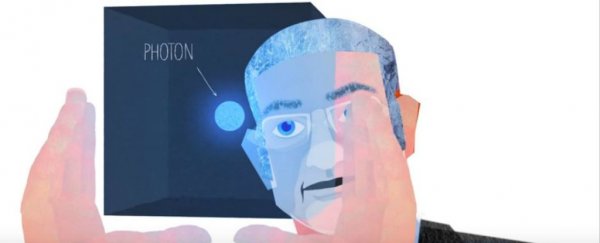It's almost Nobel Prize time again, and to celebrate, Nature has created these spectacular animations that tell the stories of some of the world's most influential Nobel Prize winners.
The videos start with Art McDonald - who was one of several scientists who won the Nobel Prize in Physics last year, for showing that neutrinos have mass - and go all the way back to 1978, when Robert Woodrow Wilson won the same prize for his work confirming the Big Bang theory.
If you want to know what it takes to work at the cutting edge of science - pigeons and all - check out some of our favourite winners from the Nature video series below:
Stefan Hell, Nobel Prize in Chemistry, 2014
Back in 2014, Romanian-born German physicist Stefan Hell was one of the winners of the 2014 chemistry Nobel Prize "for the development of super-resolved fluorescence microscopy".
But the researchers also managed to break a fundamental law of physics while doing it. Just a day in the life of a Nobel Prize-winning scientist, I guess.
Serge Haroche, Nobel Prize in Physics, 2012
In 2012, French physicist Serge Haroche was co-awarded the Nobel Prize in Physics for "ground-breaking experimental methods that enable measuring and manipulation of individual quantum systems".
In his own words, Haroche's work involved trying to "trap photons in a box" – which is a whole lot harder than it sounds.
The work Haroche began ended up forming the basis of laser spectroscopy, which is currently being used to break all sorts of records in quantum systems, plus helping physicists understand how photons work.
Saul Perlmutter, Nobel Prize in Physics, 2011
Saul Perlmutter, an American astrophysicist, won his prize "for the discovery of the accelerating expansion of the Universe through observations of distant supernovae".
As Perlmutter explains in the video, his team was able to provide evidence that the Universe is expanding faster and faster all the time.
What's even better though, is how he explains the journey of a 10-billion-year-old proton, and how it made its way to our telescopes at just the right time to forge the discovery.
Elizabeth Blackburn, Nobel Prize in Physiology or Medicine, 2009
Back in 2009, Australian-American Elizabeth Blackburn shared the Nobel Prize in Physiology or Medicine "for the discovery of how chromosomes are protected by telomeres and the enzyme telomerase".
Did the team use mice or humans for these Nobel Prize-worthy experiments? Nope, they were looking at tetrahymena - a single-celled organism that lives in pond scum.
These tiny little creatures helped scientists figure out how molecules called telomeres, which sit on the ends of our chromosomes, allow them to divide without being damaged. Understanding how to preserve those telomeres could be the key to slowing down cellular ageing.
Robert Woodrow Wilson, Nobel Prize in Physics, 1978
For our last favourite Nobel laureate, let's go all the way back to 1978. Wilson, an American astronomer, shared the Nobel Prize in Physics, "for his basic inventions and discoveries in the area of low-temperature physics".
Basically, his team discovered cosmic microwave background radiation, which is what helped confirm that the Big Bang was at the start of the Universe.
If you want to watch more (yeah, we totally binged watch them all too), you can see the whole 8 videos in the Nobel Prize series below:
